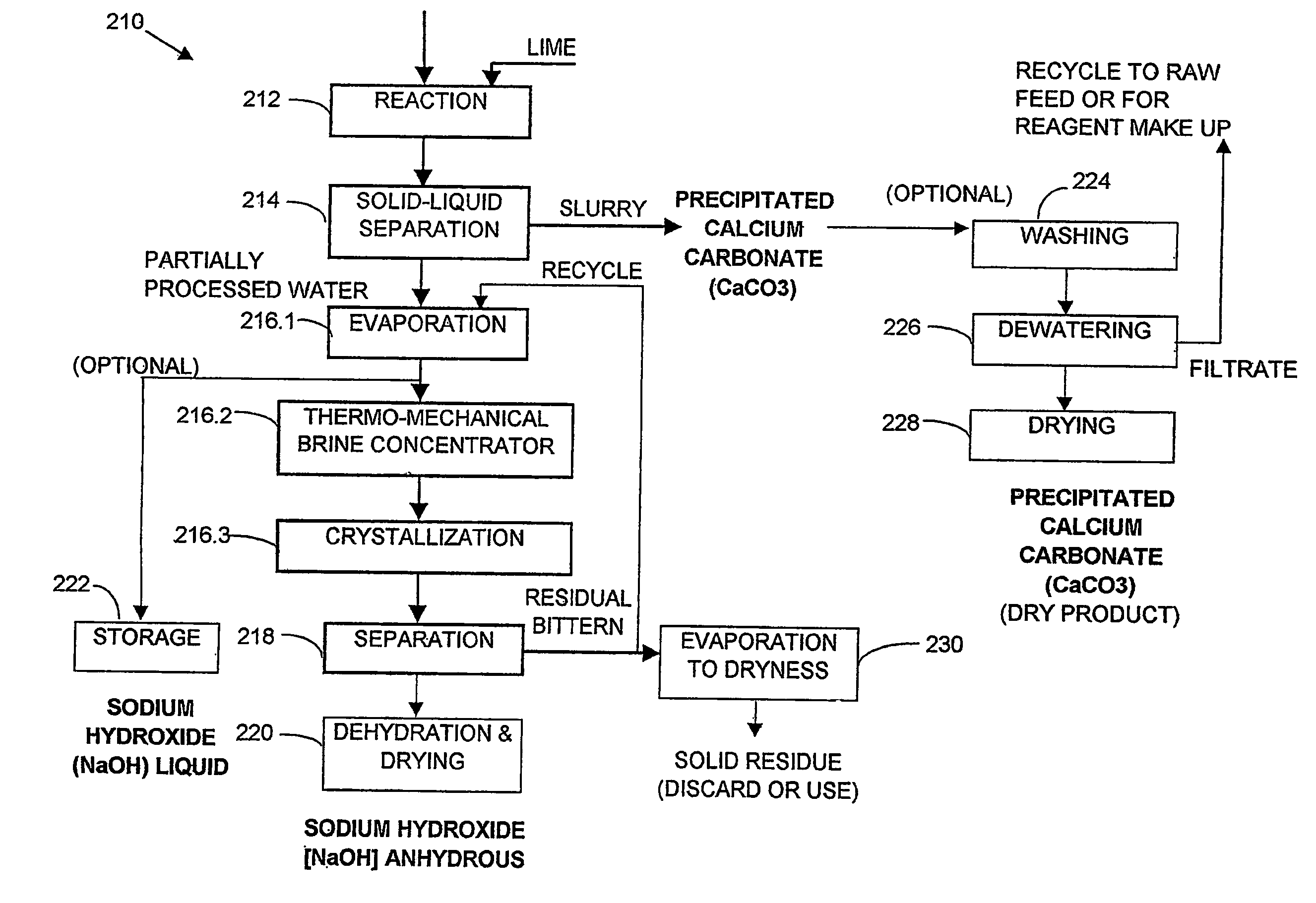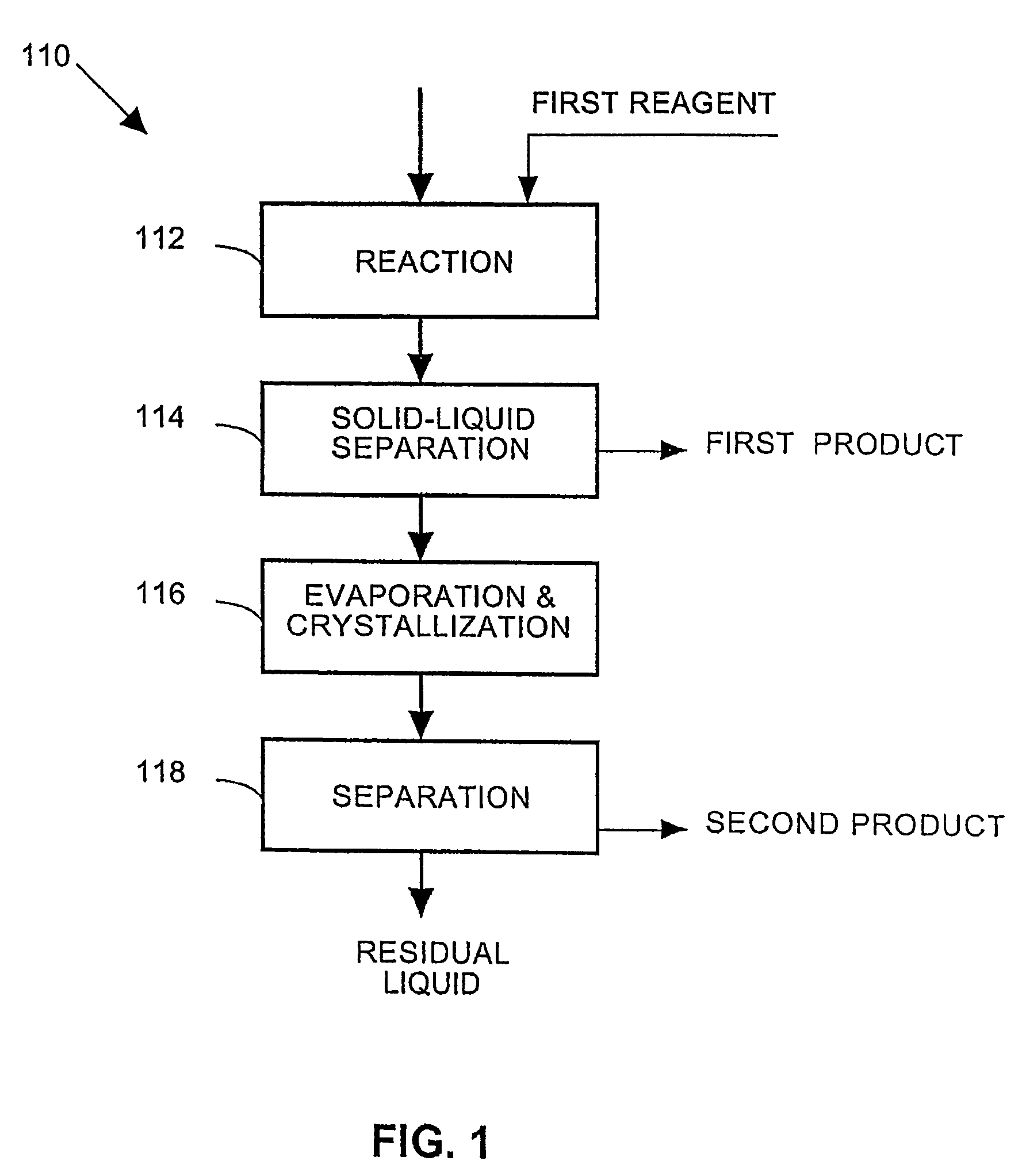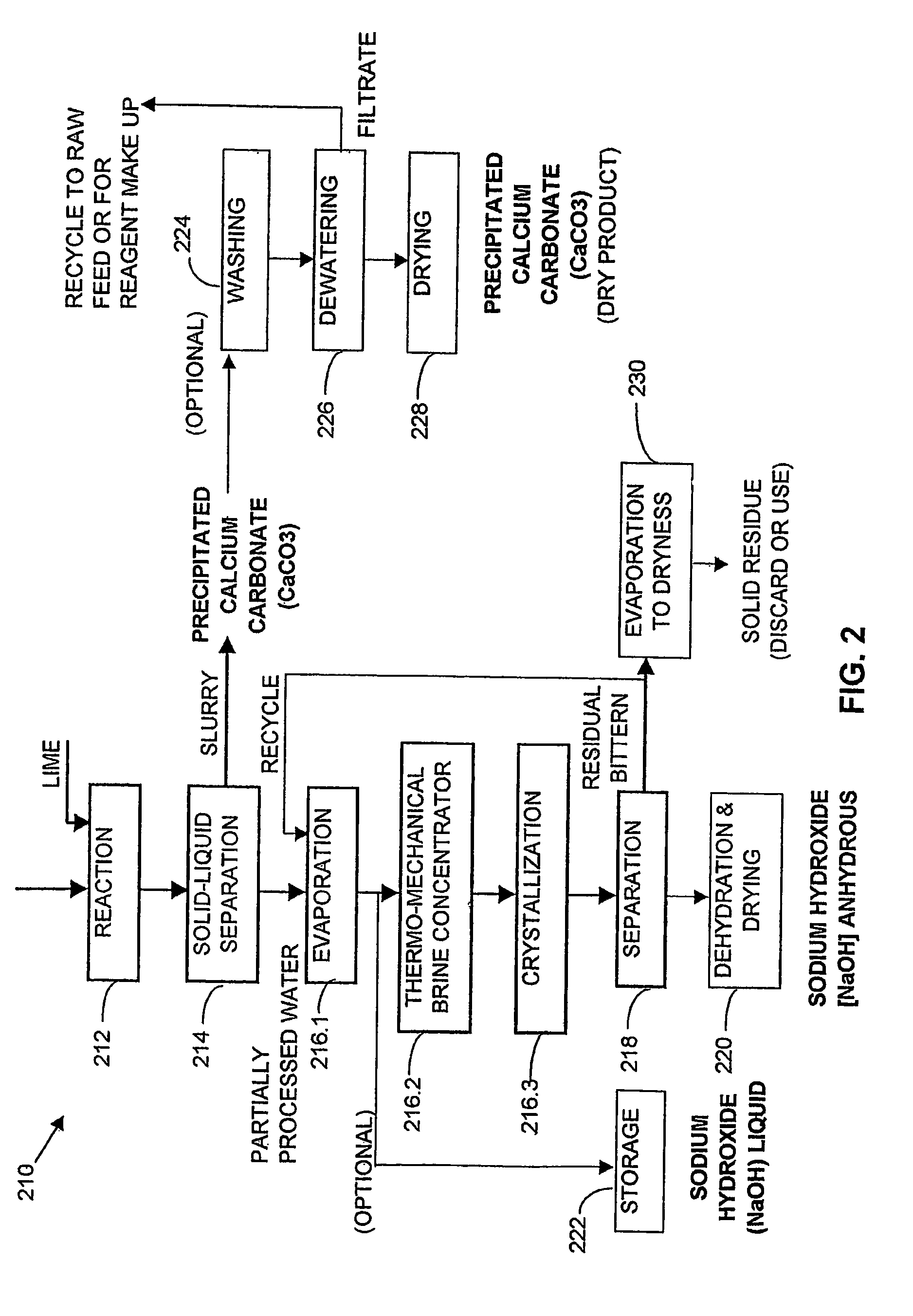Process for the treatment of saline water
a technology for impaired water and saline water, applied in water/sewage treatment by ion exchange, alkali metal halide purification, magnesium compounds, etc., can solve the problems of increasing membrane replacement costs, preventing the discharge of waste water, and shortening the life of membranes, so as to reduce the volume and salt load of ro concentrate, reduce thermal equipment size, and reduce the effect of zld costs
- Summary
- Abstract
- Description
- Claims
- Application Information
AI Technical Summary
Benefits of technology
Problems solved by technology
Method used
Image
Examples
example 1
[0356]One thousand liters of saline impaired water from a ground water source, which analysed as having 3700 mg / L sodium, 74 mg / L potassium, 120 mg / L magnesium, 49 mg / L calcium, 8540 mg / L bicarbonate, 144 mg / L sulphate, 550 mg / L chloride and determined as having 13.2 g / L TDS, was reacted with a hydrated lime slurry under strong agitation for 60 minutes according to reaction [1]. The lime slurry used contained 10 wt % solids. After reaction, the slurry so produced was separated and thickened in a thickener. The thickened slurry from the under flow was then washed in a 3 stage counter current washing unit at a volume ratio of 5 parts of washing water to 1 part of thickened slurry. The washed slurry was dried giving 13.2 kg of precipitated calcium carbonate (PCC) comprising 98.7 wt % CaCO3, 0.5 wt % Mg(OH)2, 0.3 wt % NaCl and 0.5 wt % moisture content, and having a particle size within the range of 0.5-1.0 micron.
[0357]The partially processed water (over flow of the main thickener), wa...
example 2
[0359]One thousand liters of the water used in Example 1 was split into two streams of five hundred liters each. The first stream was reacted with hydrated lime slurry according to reaction [1], with the lime slurry containing 10 wt % solids, at a dosage sufficient to convert 100% of the stoichiometric amount of HCO3− to precipitated calcium carbonate (PCC), under strong agitation for 60 minutes, at a pH of about 11.8.
[0360]After reaction, the product slurry was separated and thickened in a thickener. The thickened slurry from the underflow was washed in a three stage, counter current, washing circuit at a ratio of 5 parts of washing water to 1 part of thickened slurry. The washed slurry, after drying, yielded 6.5 kg of precipitated calcium carbonate (PCC) of the same quality as the PCC in Example 1 (representing 95% of the stoichiometric amount of HCO3− recovered as PCC). The partially processed water (overflow of the main thickener) was added to the second 500 L portion of the fee...
example 3
[0361]One thousand liters of saline impaired water from a surface mining operation which analysed as containing 1420 mg / L sodium, 11 mg / L potassium, 18 mg / L magnesium, 17.8 mg / L calcium, 1600 mg / L bicarbonate, 886 mg / L sulphate, 1060 mg / L chloride and determined as having 5 g / L TDS was first filtered through a sand filter and then desalinated using a reverse osmosis unit, giving 50% by volume permeate recovery (500 liters of fresh water) with a salinity of 30 mg / L TDS. 500 liters of concentrate with a salinity of 9.4 g / L TDS was produced. This concentrate was reacted with a hydrated lime slurry having a solids content of 10 wt %, for 60 minutes, under strong agitation, according to reaction [1]. The slurry from the reaction was then separated and thickened in a thickener and the thickened slurry from the underflow was washed in a 3 stage washing unit at a ratio of 5 parts wash water to 1 part underflow slurry. The washed slurry was then dried to give 2.5 kg of PCC product. The PCC c...
PUM
| Property | Measurement | Unit |
|---|---|---|
| concentration | aaaaa | aaaaa |
| temperature | aaaaa | aaaaa |
| temperature | aaaaa | aaaaa |
Abstract
Description
Claims
Application Information
 Login to View More
Login to View More - R&D
- Intellectual Property
- Life Sciences
- Materials
- Tech Scout
- Unparalleled Data Quality
- Higher Quality Content
- 60% Fewer Hallucinations
Browse by: Latest US Patents, China's latest patents, Technical Efficacy Thesaurus, Application Domain, Technology Topic, Popular Technical Reports.
© 2025 PatSnap. All rights reserved.Legal|Privacy policy|Modern Slavery Act Transparency Statement|Sitemap|About US| Contact US: help@patsnap.com



